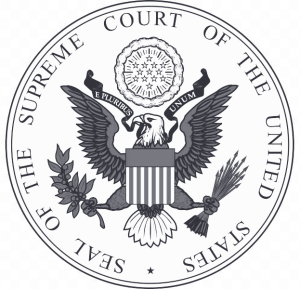What Is Investor Fraud?

Investor fraud charges often stem from conduct regulators allege was intended to mislead investors or manipulate the market. What may seem like routine financial decisions can be framed as deceptive practices.
But fraud accusations are not just about potential financial harm to investors—they can lead to criminal charges, large fines, imprisonment, and lasting damage to your career and reputation.
Understanding the nuances of investor fraud and the specific actions that can lead to these allegations is critical. By gaining a clear picture of the legal landscape, you can better navigate the charges against you and develop a strategic defense tailored to your situation.
Types of investor fraud
Fraud takes many forms, whether through misleading tactics or outright deception. It might seem like a tempting shortcut to financial success, but these practices can ensnare even the most cautious, savvy investors. Here are the most prevalent forms of investor fraud.
Ponzi schemes
One of the most infamous forms of investor fraud, Ponzi schemes promise high returns with little risk. Returns are paid out to earlier investors with the capital from new ones rather than legitimate profit. Eventually, the scheme collapses when the stream of new investors dries up, leading to massive losses.
Pyramid schemes
Like Ponzi schemes, these rely on recruiting new participants who are encouraged to recruit others, often selling a product or service. The model also collapses when recruiting slows.
Insider trading
Insider trading happens when someone uses confidential, non-public information to gain an unfair advantage in the market. Like having a secret playbook and using it to make deals other investors do not see coming, insider trading skews the playing field by giving a significant financial advantage to a privileged few.
Pump and dump schemes
By artificially inflating stock value with false or exaggerated claims and then selling when the price peaks, people executing these schemes “pump up” the stock price only to “dump” the shares before the price crashes.
Affinity fraud
This form of fraud targets specific, close-knit communities—like religious or ethnic groups—exploiting trust to offer what seems like exclusive investment opportunities. By highlighting a shared heritage, a false sense of credibility is created that makes the fraud harder for victims to detect.
Legal implications of investor fraud
Investor fraud carries serious legal consequences. Those responsible for the fraud may face fines, restitution, imprisonment, loss of professional licenses, and long-term reputational damage. However, the specific consequences depend on whether the alleged crimes are being tried as civil or criminal matters.
Civil cases aim to compensate victims financially, and plaintiffs only need to prove fraud by a “preponderance of evidence”—that it is more likely than not that fraud occurred. Penalties for civil judgments include financial restitution for investors and injunctions that prevent the accused from engaging in certain business practices in the future.
Criminal cases have a much higher burden of proof—beyond a reasonable doubt—and carry more severe consequences, such as heavier fines and imprisonment.
In some cases, civil and criminal cases occur simultaneously, allowing authorities to address fraud from multiple angles.
Who investigates investor fraud?
Several key agencies can play a role in uncovering fraudulent activities:
- Securities and Exchange Commission (SEC). Oversees the securities industry, enforces laws to protect investors, and conducts investigations, often using subpoena power to gather evidence.
- Federal Bureau of Investigation (FBI). Focuses on the criminal aspects of fraud, employing sophisticated forensic techniques to build criminal cases.
- State regulators. Enforce state securities laws, support federal agencies on multi-jurisdictional cases, and support local investors who have been defrauded.
These agencies share information and combine resources and expertise to uncover fraud, protect investors, and uphold market integrity.
The process of investor fraud investigations
Fraud is often uncovered through investor complaints, routine regulatory audits, or monitoring systems flagging suspicious activity. Whistleblowers play a role, too, offering insider knowledge to help authorities zero in on fraud. Many agencies, including the SEC, offer incentives and protections to motivate whistleblower reports.
Once suspected fraud is revealed, investigators undertake a comprehensive audit to examine transactions, contracts, and business operations for further signs of deception. In the process, auditors assess accounting practices for regulatory compliance and interview key players like executives, employees, and investors.
If enough evidence is found to support charges, legal proceedings may follow.
Investor fraud defense strategies
When facing allegations of investor fraud, defendants employ several key strategies to challenge the prosecution’s case.
Lack of intent
One of the most common defense strategies is arguing that the actions were not intended to intentionally mislead or defraud anyone but were the result of a misunderstanding, oversight, or honest mistake.
Example: A company executive accused of misleading investors might argue that discrepancies in financial projections resulted from unexpected market changes, not deliberate deception.
Insufficient evidence
This can involve highlighting weaknesses in the prosecution’s case, questioning witness credibility, or disputing the accuracy of financial records.
Example: The defense may identify flaws in the government’s evidence, such as demonstrating that financial records were manipulated by others without the defendant’s knowledge.
Regulatory compliance
Another powerful defense strategy is demonstrating compliance with existing financial regulations. By showing that all actions were in accordance with required financial disclosures, filings, and industry practices, the defendant can argue to have not committed fraud.
Example: A broker might present documentation that shows that the trades in question were properly reported and compliant with SEC regulations rather than evidence of alleged insider trading.
Good faith
The good faith defense asserts that the accused acted based on the best information available at the time, without any intent to deceive investors. It highlights a belief that the actions were lawful.
Example: A financial advisor accused of promoting risky investments could argue that they genuinely believed the investments were based on accurate and credible information.
While these strategies can help individuals and organizations avoid liability, broader consequences often emerge. Fraud allegations can lead to increased regulatory scrutiny and stricter enforcement measures industry-wide.
Contact an experienced investor fraud defense attorney
Given the gravity of investor fraud charges and potential fall-out, it is important to have experienced legal counsel and a defense strategy tailored to your specific circumstances.
Whether you are an investor who has been impacted or someone accused of fraud, understanding your legal options is critical for protecting your interests.
At Dughi, Hewit & Domalewski, our experienced team is ready to aggressively fight investment fraud charges and ensure your preparation for every stage of the investigation and trial.
Reach out to learn more about our firm’s defense experience and schedule a consultation with our team today.









